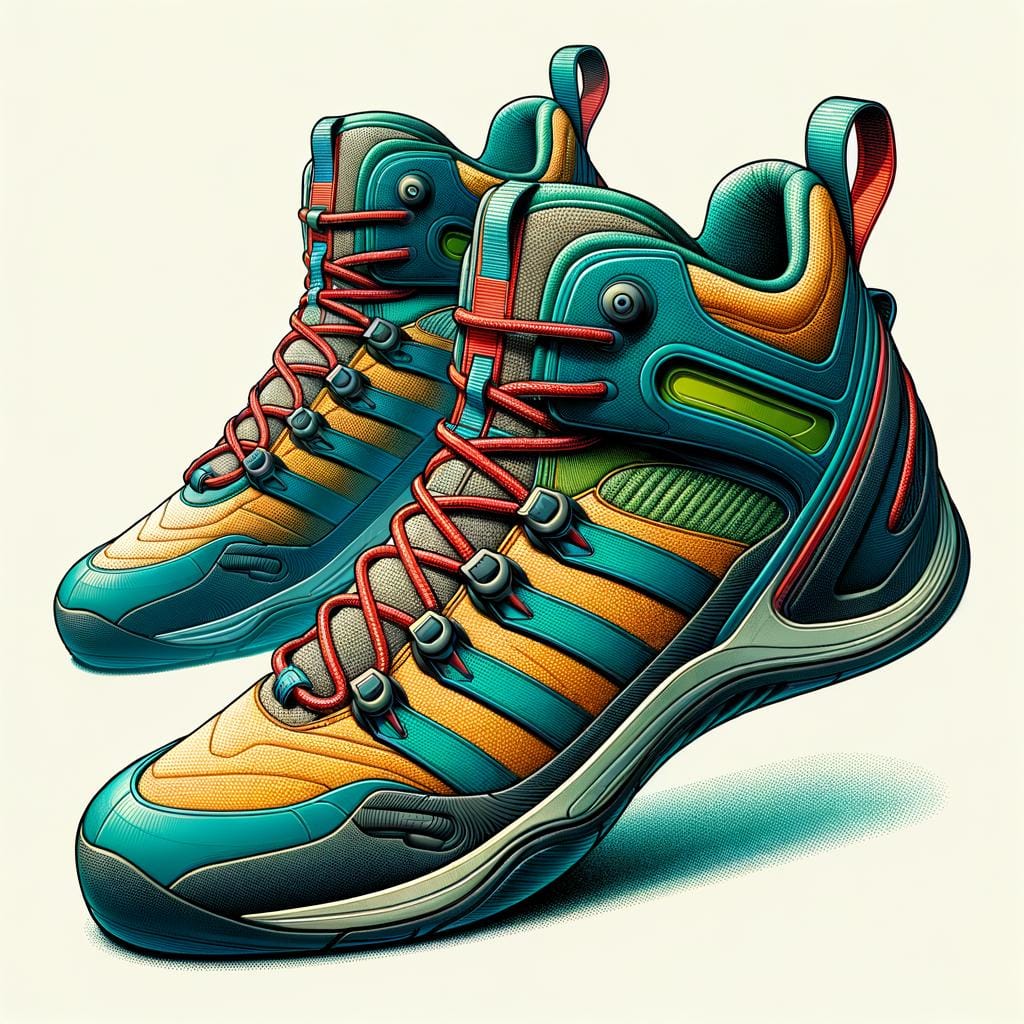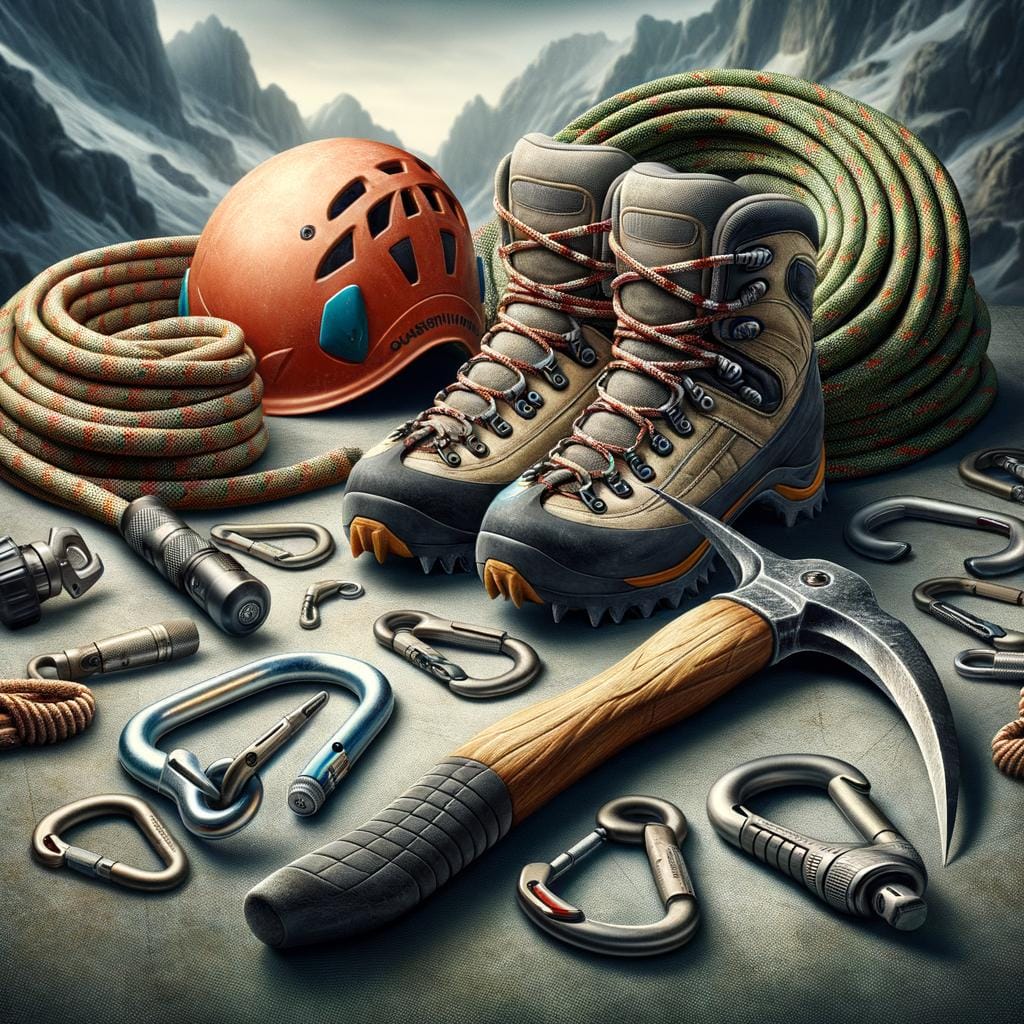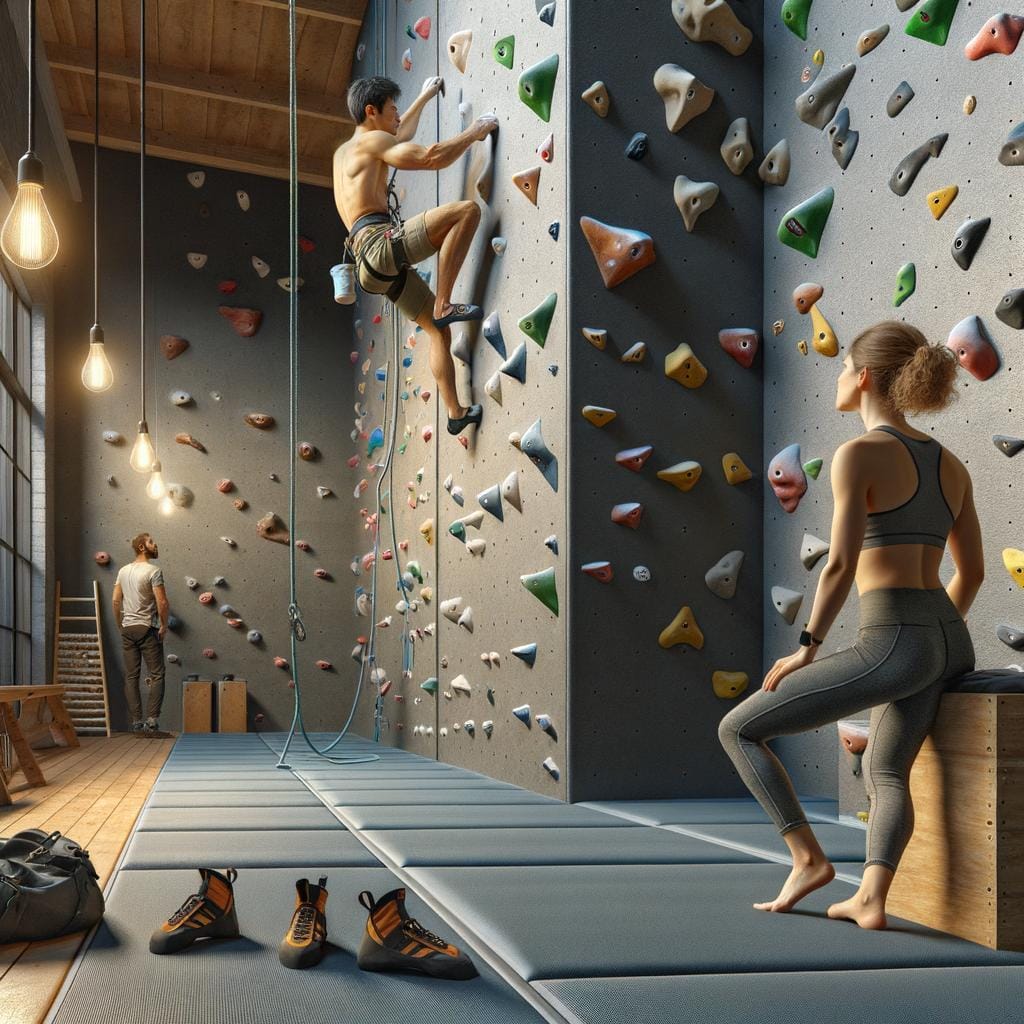Climbing shoes are an essential piece of equipment for any climber, with their design specifically tailored to enhance performance and provide optimum grip on a variety of surfaces. In order to fully experience the thrill and challenge of climbing, it is paramount to choose the right climbing shoes that suit your individual needs and preferences.
Whether you are a seasoned professional or just starting out in the sport, selecting the perfect pair of climbing shoes can make a significant difference in your overall climbing experience.
When it comes to climbing shoes, one size does not fit all. The importance of choosing the right pair cannot be overstated, as they play a crucial role in your ability to maneuver on difficult terrain and reach new heights.
Different types of climbing shoes are specifically designed for various styles of climbing, such as bouldering, sport climbing, or trad climbing. Understanding these nuances and selecting the appropriate shoe can greatly impact your comfort level, performance, and safety while on the rock.
In this article, we will explore the diverse world of climbing shoes – from understanding the different types available and how to properly size them for maximum performance, to identifying key features of high-quality options and best practices for maintaining and cleaning your gear. Additionally, we will delve into tips for breaking in new climbing shoes effectively and examine where future technology and innovation may take this essential piece of equipment in the ever-evolving world of rock climbing.
Different Types of Climbing Shoes and Their Uses
When it comes to climbing shoes, there are several different types available on the market, each designed with specific features to cater to different styles of climbing. One common type is the neutral shoe, which is great for beginners and all-day comfort. These shoes have a flat sole, making them ideal for long climbs where you need to wear your shoes for extended periods.
On the other hand, aggressive climbing shoes are designed with a downturned shape that pushes your toes forward into a more curved position. These shoes are perfect for technical climbs that require precision footwork and edging on small holds. The downturned design provides added power and sensitivity, allowing climbers to tackle challenging routes with confidence.
For crack climbing or trad climbing where jamming your feet into tight spaces is necessary, crack climbing shoes are the way to go. These shoes typically have stiffer soles and minimal padding in order to protect your feet in narrow cracks while providing stability and support.
They also feature reinforced rubber in key areas to prevent wear and tear from sharp edges. Whether you’re a beginner or an advanced climber, choosing the right type of climbing shoes can make a significant difference in your performance on the rock.
In addition to these main types of climbing shoes, there are also specialized models available for bouldering, sport climbing, and outdoor versus indoor use. Bouldering shoes typically have a snugger fit and stickier rubber for precise movements on short, powerful routes. Sport climbing shoes prioritize comfort and durability for long days at the crag.
Indoor climbing shoes may focus more on breathability and convenience since they are used primarily in gym settings where climbers might be taking them on and off frequently throughout their session. By understanding the differences between these various types of climbing shoes and their intended uses, you can make an informed decision when selecting the best pair for your next ascent.
How to Properly Size Climbing Shoes for Maximum Performance
Properly sizing your climbing shoes is crucial to ensure maximum performance and comfort during your climbs. Ill-fitting shoes can not only lead to discomfort but can also hinder your ability to execute precise movements on the rock or wall. Here are some important guidelines to follow when selecting the right size for your climbing shoes:
- Consult Size Charts: Different brands may have slight variations in their sizing, so it’s essential to refer to the specific size chart provided by the manufacturer.
- Try Them On: Visit a local gear shop and try on different pairs of climbing shoes to determine which size feels most comfortable for you.
- Consider Your Climbing Style: The type of climbing you primarily engage in can also influence the size of your shoes. For more technical climbs that require precision footwork, a tighter fit may be preferable.
When fitting climbing shoes, it’s important to remember that they should feel snug without causing pain or hot spots. A common mistake climbers make is choosing shoes that are too tight, leading to unnecessary discomfort and potential foot injuries.
- Toe Length: Make sure there is minimal dead space around the toes, as this will help provide better sensitivity and control when edging or smearing on the rock.
- Arch Fit: Ensure that the arch of your foot aligns with the shoe’s shape for optimal support and stability during climbs.
By following these guidelines and taking the time to properly size your climbing shoes, you can enhance your overall performance and enjoyment while tackling various routes and challenges on the wall or crag.
Features to Look for in High-Quality Climbing Shoes
When it comes to climbing shoes, there are several key features to look for in order to ensure you are investing in a high-quality and durable pair. These features play a crucial role in providing the necessary support, grip, and comfort needed for various climbing activities.
Material
One of the most important features to consider when choosing climbing shoes is the material they are made of. High-quality climbing shoes are typically constructed with durable materials such as leather or synthetic fabrics that offer both flexibility and support. Leather shoes tend to stretch over time, molding to the shape of your foot, while synthetic options provide more rigid support for precision climbing.
Rubber Soles
Another essential feature to look for in high-quality climbing shoes is the type of rubber used on the soles. A good pair of climbing shoes will have sticky rubber soles that provide excellent traction on different types of rock surfaces. The thickness and stickiness of the rubber can affect performance, so it’s important to choose a pair with a sole that matches your climbing style and preferences.
Closure System
The closure system of climbing shoes is also an important feature to consider when looking for high-quality gear. There are different types of closure systems available, including lace-up, Velcro, and slip-on designs. Each type offers its own advantages in terms of fit, adjustability, and convenience. It’s essential to choose a closure system that not only provides a secure fit but also allows for easy adjustments during climbs.
By paying attention to these key features when selecting climbing shoes, you can ensure you are investing in a high-quality pair that meets your needs and enhances your performance on the rocks. Whether you’re a beginner or an experienced climber, choosing the right features will make a big difference in your overall climbing experience with your trusty climbing shoes by your side.
Best Practices for Maintaining and Cleaning Climbing Shoes
Climbing shoes are an essential piece of equipment for any climber, regardless of their skill level. Taking care of your climbing shoes is crucial to ensure their longevity and maintain optimal performance during climbs. Proper maintenance and cleaning routines can help extend the life of your shoes and keep them in top condition for your next adventure on the rocks.
One of the best practices for maintaining climbing shoes is to always clean them after each use. Dirt, sweat, and grime can build up on the rubber sole and synthetic materials of the shoe, affecting its grip and overall performance. Use a soft brush or cloth to gently wipe away any debris from the surface of the shoe. Avoid using harsh chemicals or cleaners that can damage the shoe’s materials.
In addition to regular cleaning, it’s important to store your climbing shoes properly when not in use. Avoid leaving them in direct sunlight or extreme temperatures, as this can cause the materials to degrade faster. Instead, store them in a cool, dry place with good airflow to prevent mold growth. Investing in a breathable shoe bag or hanging them upside down with carabiners can help maintain their shape and freshness between climbs.
| Maintenance Tips | Cleaning Advice |
|---|---|
| Clean after each use | Avoid harsh chemicals |
| Store in cool, dry place | Avoid direct sunlight |
Tips for Breaking in New Climbing Shoes
When it comes to breaking in new climbing shoes, patience and proper technique are key. New climbing shoes can often feel snug or uncomfortable at first, but with the right approach, they will eventually mold to your feet and provide the performance you need on the rocks.
One of the most common methods for breaking in climbing shoes is wearing them around the house for short periods of time each day. This allows the shoes to gradually stretch and conform to the shape of your feet without causing too much discomfort.
Another effective way to break in new climbing shoes is to do light bouldering or easy climbs in a gym. By using the shoes on easy routes, you can gradually break them in while still being able to focus on your technique and footwork.
It’s important not to push yourself too hard or wear the shoes for extended periods during this process to avoid unnecessary pain or blisters. Additionally, some climbers opt to use a shoe stretcher or wear damp socks while breaking in new climbing shoes to help speed up the stretching process.
It’s essential to remember that every climber’s experience with breaking in new climbing shoes may vary based on factors such as shoe material, brand, and individual foot shape. Some climbers may find that their shoes break in quickly, while others may require more time and effort. Ultimately, finding what works best for you and your comfort level is crucial for enjoying a successful climbing experience with your new pair of climbing shoes.
| Tip | Technique |
|---|---|
| Wear around the house | Allows gradual stretching |
| Try light bouldering or easy climbs | Breaks in while focusing on technique |
| Use a shoe stretcher or damp socks | To speed up stretching process |
The Future of Climbing Shoe Technology and Innovation
As climbers continue to push the limits of their abilities and venture into more challenging terrains, the importance of innovation in climbing shoe technology cannot be overstated. The future of climbing shoe design is an exciting prospect, with advancements that promise to enhance performance, comfort, and durability for climbers of all levels.
One area where we can expect to see significant development in climbing shoe technology is in sustainability. With a growing awareness of environmental issues, many brands are already incorporating eco-friendly materials and manufacturing processes into their products. In the future, we can anticipate even more sustainable options for climbers who want to reduce their impact on the planet without compromising on quality.
Furthermore, as the sport of climbing continues to gain popularity around the world, we can expect to see a greater diversity of styles and designs in climbing shoes. Brands are constantly pushing the boundaries of creativity and functionality to cater to different preferences and needs.
Whether you’re tackling steep overhangs or delicate slabs, there will likely be a climbing shoe specifically designed to maximize your performance on any type of terrain. The future holds endless possibilities for climbers looking for the perfect pair of climbing shoes to help them reach new heights.
Frequently Asked Questions
Do Climbing Shoes Really Make a Difference?
Climbing shoes do make a difference in your climbing performance. They are specifically designed to provide grip, support and precision on various rock surfaces. The snug fit allows for better sensitivity and control while climbing.
What Shoes Should I Climb In?
The type of shoes you should climb in depends on the type of climbing you are doing. For outdoor climbing, consider durable shoes with good edging ability. For bouldering, choose shoes with more aggressive downturn for better toe hooking and heel hooking.
Why Are Bouldering Shoes So Expensive?
Bouldering shoes tend to be expensive due to the specialized materials and construction required for high-performance climbing footwear. Features like stickier rubber, precise fit, and durable build add to the cost of production, making them pricier than regular sport or trad climbing shoes.

An avid outdoor enthusiast, writer, and environmental advocate who has spent over two decades exploring the world’s most breathtaking landscapes. With a background in environmental science and a passion for adventure, Frances combines her love for nature with her talent for storytelling to inspire others to embark on their own outdoor journeys.





